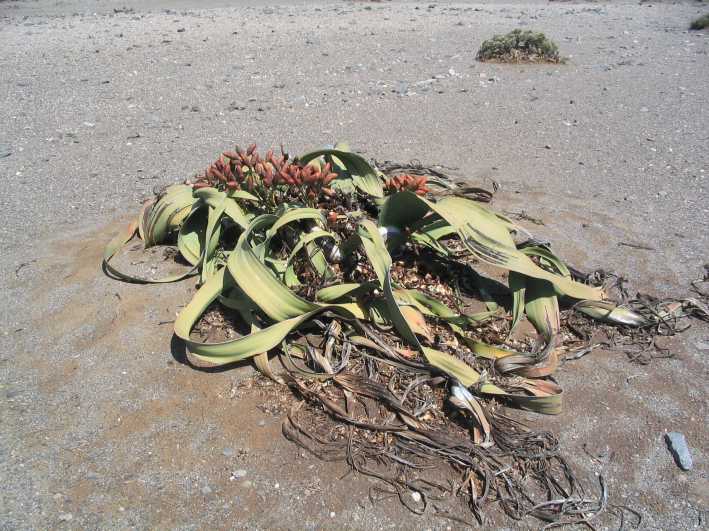Contents
Mother Nature is full of wonder and mystery. Every aspect of Her is designed to nourish and cherish life on Earth. Plants are one of Her nurturing aspects through which Mother Nature is nurturing life and hiding secrets waiting for humans to reveal. Throughout the history of mankind, we have been shaped, nourished, protected, and healed by secrets from Plants.
Recently, some researchers revealed secrets of a specific Plant which has kept the scientist puzzled for a long time. Uncovering this secret may help us reshape agricultural systems to cope with the increasing heat of climate change.
Discovering an Undying Plant, “Welwitschia”
The longest-lived leaves in the Plant kingdom can be found only in the arid and harsh desert between northern Namibia and southern Angola. One does not imagine any living Plants in a desert as it is not the most hospitable place for living things to flourish. The Namib Desert is notorious for receiving less than two inches of precipitation a year, but in this harsh environment, a two-leaf Plant is not only surviving but thriving. This Plant is called Welwitschia (Welwitschia mirabilis), named after Friedrich Welwitsch, who discovered the Plant first in 1859.
The Afrikaans call this Plant “Tweeblaarkanniedood” meaning “two leaves that cannot die”. The naming itself suggests that the Plant grows only two leaves, and continuously keeps growing in a lifetime which can last many millennia. Yes, it is true, this Plant can live for thousands of years, and throughout lifetime, the Plant never stops growing. Some of the largest Welwtschia Plants are believed to be over three thousand years old, with only two leaves slowly growing since the beginning of the Iron Age.

There is not much to look at in a Welwitschia Plant, which consists only of two-leaves in the middle of a desert, often fed on by thirsty animals, gradually becoming shredded and curled over time, making the whole shape looks like an octopus. One of the 19th-century directors of Kew Garden in London stated that this was without a doubt the most wonderful Plant ever brought to England and also one of the ugliest.
Since the discovery of Welwitschia, biologists have been puzzled, including Charles Darwin. It is said that when Friedrich Welwitsch first came across this Plant, he could do nothing but kneel down on the desert sand and gaze at it, half in fear lest a touch should prove it a figment of the imagination.
In a recent study published in Nature Communications, researchers report some of the genetic secrets behind Welwitschia’s mystery of shape, profound resilience, and extreme longevity.
Secrets of Welwitschia Genetics
According to scientists, the Welwitschia genome actually reflects arid and nutrient-poor surroundings. After analyzing its genome, the scientists confirmed that its genetic history corresponds with the environmental history.
Botanist at the Fairy Lake Botanical Garden in Shenzhen, China, Tao Wan, is the lead author of this study who explained that around 86 million years ago the region was undergoing drastic changes, possibly that was the time during the beginning of the formation of the Namib Desert. During this time, due to prolonged drought and increased aridity, the entire Welwitschia genome doubled after a ‘mistake’ in cell division. He mentioned that “extreme stress” is often connected with such kind of genome duplication events. These duplicated genes are also released from their original functions, potentially taking on new ones.
However, having more genetic material comes with a high maintenance cost. Dr. Wan explained that the most basic activity of life is DNA replication, so if a living being has a big genome, it must usually be energy-consuming to maintain life, especially in a harsh environment like the Namib Desert. According to research, a large amount of Welwitchia’s genome is “Junk” self-replicated DNA sequences which scientists call retrotransposons. As this junk needs to be replicated and repaired, how did Welwitshia do this in such harsh environment?
The researchers encountered a burst of retrotransposons activity approximately two million years ago, possibly for the increased temperature stress. To counter this, the Welwitschia genome endured widespread epigenetic changes which silenced the junk DNA sequences through a specific process called DNA methylation. Along with this process, many other selective forces trimmed down the size and energetic maintenance cost of Welwitschia’s duplicated library of DNA. In Dr. Wan’s words, it was about achieving a very efficient, low-cost genome.
The study also found that the average Plant leaf grew from its apexes or from the tippy-tops of its stem and branches. After its growing tip died, the leaves instead poured out of a vulnerable area of its anatomy called the basal meristem. This part started to supply fresh cells to the growing Plant. According to Dr. Wan, increased activity of some genes or a large number of copies involved with efficient metabolism, stress resilience, and cell growth in this area may have helped Welwitschia continue to grow under extreme environmental stress.
Conclusion
In a warming world, this genetic revelation of the surviving mechanism of Welwitschia offers knowledge which may help breed hardier and less thirsty crops in the future.
Scientists have discovered that Welwitschia can survive harsh environments for long, while maintaining DNA and preserving proteins, and are rearward researching possibilities to improve current agriculture systems and processes all over the world and affect the climate warming situation globally.
References
- Wan, T., Liu, Z., Leitch, I.J. et al. (2021). The Welwitschia genome reveals a unique biology underpinning extreme longevity in deserts. Nature Communication, [online] Volume, 12, p. 4247. Available at: https://doi.org/10.1038/s41467-021-24528-4 [Accessed 8th August 2021].

